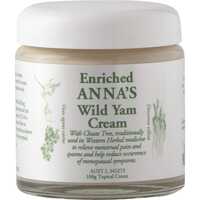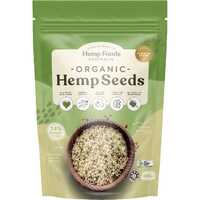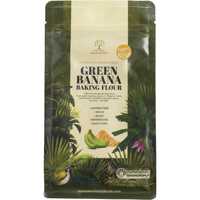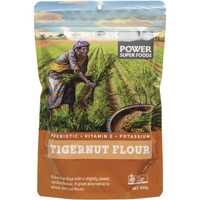The most humble of ingredients, flour is a common powder used to make a variety of different foods. From breads and pastries to sauces and cakes, flour influences the shape and texture of food along with its nutritional profile and taste. Flour is available in a huge variety of forms, which can be categorised broadly as either gluten-containing or gluten-free flour. Along with popular wheat-based flours, you can also find flours made from other grains, nuts, seeds, and plant roots.
Let's take a detailed look at flour, including a short history and comprehensive list of wheat flours and healthy alternatives.
What is Flour?
Flour is a powder made from grinding up raw ingredients. Most flour products are made from wheat and other grains, but they can also be made from roots, beans, nuts, seeds, vegetables, or fruits. Flours made from grains are often called cereal flours, including both whole-grain and refined flours. Whole-grain flours consist of the endosperm, germ, and bran together; and refined flours are made from the endosperm alone.
Flours are integral to a variety of different foods, including bread, which is a staple in many global cultures. Wheat flour is common to many European, Middle Eastern, and Asian cultures, corn flour is a staple in South America, and rye flour is widely used in central and northern Europe. Alternative grains and non-cereal flours have become more popular over recent years, as modern production techniques and growing health consciousness continue to influence buying decisions.
A Short History of Flour
The history of flour stretches back to at least 6,700 BC, although it was likely consumed much earlier. For a long time, flour was made with a common mortar and pestle, and basic cone mills were developed much later during ancient Roman times. The ancient Greeks took this technique further with watermills, and windmills were also used to increase production rates and shelf life.
The preservation of flour was greatly improved during the Industrial Era, with the world's first steam-powered flour mill opening in England in 1780. The first North American flour mill started operation less than 30 years later, and thousands of steam-powered mills opened across the world over the next few decades.
In the 20th century, modern machines were developed to make the milling process much faster and more efficient. Another important development took place in the 1930s when vitamins and minerals were added to commercial wheat products for the sake of nutritional enrichment. The rise of non-wheat flour has taken the world by storm in the 21st century, as consumers look for healthy, nutritionally balanced, and gluten-free alternatives to standard baking products.
The Many Types of Flour
Flour is available in a huge variety of forms, and depending on your focus, it can be categorised in a multitude of ways. For example, there are wheat flours and non-wheat flours, cereal flours and non-cereal flours, and whole-grain flours and refined flours. You can also list flour products based on their application, with bread flour, cake flour, pastry flour, and all-purpose flour each having a different balance of ingredients.
One of the best ways to make sense of flour, however, is to separate gluten-containing from non-gluten flours.
- Gluten-containing flour includes wheat flour in its many forms, including common wheat flour, semolina flour, and spelt flour. It also includes traditional sourdough flours made from rye, as they also contain gluten. Along with their base cereal, these flour products are often distinguished based on their colour, hardness, level of refinement, and nutritional enrichment.
- Non-gluten flour includes all powdered flour products that don't contain gluten. This type of flour is suitable for people with gluten-related disorders, or anyone else who wants to avoid gluten for health reasons. Gluten-free flour products vary widely, with some flours made from common grains like rice and corn and others made from seeds, nuts, vegetables, and fruits.
Let's create a detailed list of flours, starting with common wheat products before moving on to different cereals and non-grain ingredients.
Wheat flours
Wheat flour is the most common type of flour in the world. This ubiquitous powder can be made by grinding a number of wheat varieties, which are often categorised as either "soft" and "weak" or "hard" and "strong". Soft wheat has low gluten content, and hard wheat has high gluten content. There are also many regional varieties of wheat flour, with individual products removing and processing different parts of the grain.
There are three parts of the grain used to make flour: the endosperm or protein part, the germ or protein/fat/vitamin part, and the bran or fibre part. This leads to four different types of flour: wholemeal flour with all three parts, brown flour with the germ and bran, germ flour with the endosperm and germ, and white flour with the endosperm only.
In terms of health benefits, the following two wheat flour deserve special mention:
Wholemeal flour
Wholemeal flour is also called whole-wheat flour, and it contains all parts of the grain. With the wheat germ, endosperm, and bran all represented, this type of flour is thought to be the most balanced or complete. Often used to make breads and baked goods, wholemeal flour can be added to refined white flour to restore lost nutrients.
Spelt flour
Spelt flour is an ancient grain and wheat species. Spelt dough needs less kneading than common wheat or durum wheat, and it has a relatively low protein count. This makes spelt flour great for creating cookies, pancakes, crackers, and other soft foods. Spelt offers a number of essential nutrients, including iron, magnesium, and zinc.
Non-wheat flours
Gluten-free, non-wheat flour products are more popular than ever. From grains and roots to nuts and seeds, let's take a look at some of the most popular varieties consumed around the world.
Rye flour
Rye flour is used to bake the traditional sourdough breads of Europe. From Germany and Austria to Poland, Russia, and Scandinavia, these traditional breads typically use a mix of rye and wheat flours for the perfect blend of gluten. Europe's famous pumpernickel bread is made exclusively of rye, with bakers using a mixture of rye flour and meal. Rye flour is high in many beneficial nutrients, including iron, magnesium, manganese, copper, B vitamins, and fibre.
Quinoa flour
Quinoa flour is an excellent source of nutrients, including fibre, protein, vitamins, and minerals like calcium, potassium, and iron. Unlike many plant proteins, quinoa is a complete protein that contains all nine essential amino acids. Our bodies can't make these amino acids on their own, so we need to get them from food. Quinoa is also naturally gluten-free and low in sodium, which makes it a great addition to most diets.
Hemp flour
Hemp flour is packed with nutrients, including lots of fibre, protein, and healthy fats. This beneficial cooking ingredient is also incredibly high in minerals like magnesium, phosphorus, potassium, sodium, sulphur, calcium, iron, and zinc. Hemp flour is naturally gluten-free and high in plant-based protein, and it has an ideal flavour for many sweet and savoury recipes.
Buckwheat flour
Buckwheat is a "pseudocereal", with its grains offering many of the same uses as cereals while remaining naturally gluten-free. While buckwheat flour should not be used solo in baking due to its natural hardness, it can be successfully added to other types of flour. Buckwheat is a highly nutritious whole grain, with this simple, uncomplicated flour providing a great source of protein, energy, and fibre.
Chickpea flour
Chickpea flour is low in carbs and calories, naturally gluten-free, and packed with beneficial protein and fibre. In fact, chickpea flour is one of the few gluten-free flours that manages to bind well when hydrated, which makes it ideal for quick-cooking batters. This flour has a much richer and nuttier flavour than standard wheat flours, and it works well with a range of sweet and savoury dishes.
Almond flour
Almond flour is another popular gluten-free flour, and it's made by grinding blanched almonds into a fine powder. This process is different from making almond meal, which is much coarser, as the almond skins are left intact. Almond flour is a great source of several vitamins and minerals, including magnesium, vitamin E, protein, and healthy omega-3 fats. While almond flour is high in calories, it has a fantastic nutty flavour and works well in baked goods and some savoury dishes.
Tiger nut flour
Tiger nut flour is a starchy powder made from root vegetables. The tuber from the chufa sedge is ground up to produce this flour. This material is also known as nut grass, yellow nutsedge, water grass, or earth almond. Tiger nut flour is low in carbohydrates and naturally gluten-free, which makes it popular with many health enthusiasts. Tiger nut flour is also rich in unsaturated fats and protein, along with nutrients like calcium, phosphorus, sodium, potassium, iron, and zinc.
If you're looking for healthy wheat and non-wheat flour products, Healthy Being has everything you need. We have wholemeal flours, grain flours, and a wide variety of gluten-free flour products to improve your health and enhance your well-being. At heavily discounted prices across our entire range, and with free shipping options across Australia, there is no better time to start your journey towards a healthier and happier you!


 Certified Organic
Certified Organic Vegan Friendly
Vegan Friendly  Vegetarian
Vegetarian Organic Ingredients
Organic Ingredients Dairy Free
Dairy Free Gluten Free
Gluten Free Keto Friendly
Keto Friendly































